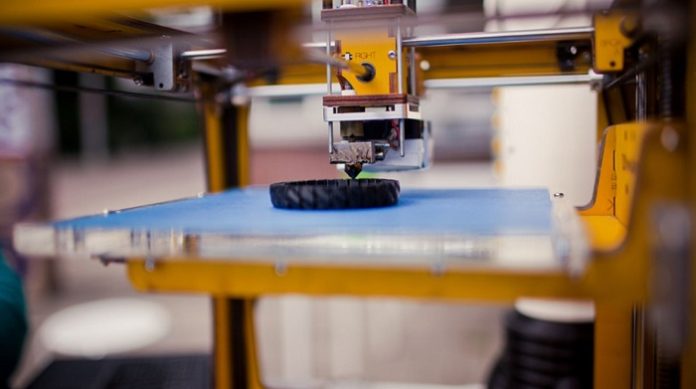Vibrations during 3D printing either slow down the process or warp the parts, but new software could enable manufacturers to keep up the speed without sacrificing accuracy.
The product, invented at the University of Michigan and developed by the spinoff company Ulendo, was launched at North America’s largest additive manufacturing conference, the RAPID + TCT Conference.
The software essentially serves as a translator between the commands that would print the part in a perfect world, and how the machine needs to compensate for vibrations in the real world. It works for printers that mechanically move a printhead.
“If you want to reduce vibration in a moving object, most times you can do that by slowing down. But as 3D printing is already very slow, that solution creates another problem,” said Chinedum Okwudire, U-M associate professor of mechanical engineering and founder of Ulendo. “Our solution allows you to print fast without sacrificing quality.”
As a result, printers could double their speed without consuming much more energy, potentially reducing the cost per printed part as well.
The Ulendo software is called FBS, which stands for Filtered B Splines. That technical name refers to the mathematical function Okwudire’s team used to translate the machine commands from the ideal expectation to commands that would compensate for vibration in the 3D printer.
“Say you want a 3D printer to travel straight, but due to vibration, the motion travels upward. The FBS algorithm tricks the machine by telling it to follow a path downward, and when it tries to follow that path, it travels straight,” Okwudire said.
Okwudire first began thinking about software solutions for vibrations while working in the industry, faced with a high-precision milling machine tool that was vibrating. His team couldn’t stiffen the machine to prevent vibrations, so they were forced to slow it down.
Beginning at U-M as a professor in 2011, Okwudire had the freedom to design software that could overcome machine vibrations. Then in 2017, a mechanical engineering graduate student from Okwudire’s lab implemented the software on a 3D printer.
When the research was highlighted with a YouTube video, commenters made the market for the solution apparent, and Ulendo was born through Innovation Partnerships at U-M.
“Members of the 3D printing industry have the same jaw-dropping reaction I had when I first heard about how this technology results in a printer operating at two times the speed and 10 times the acceleration,” said Ulendo CEO Brenda Jones.
Okwudire and his team will work on expanding the algorithm to other kinds of machines, including robots, machine tools, and more types of 3D printers. At RAPID + TCT, he will also present his lab’s latest technology, SmartScan. This software intelligently moves a laser beam around to prevent warping due to heat buildup in parts printed through powder bed fusion, a technique that melts the powder into 3D-printed parts.








